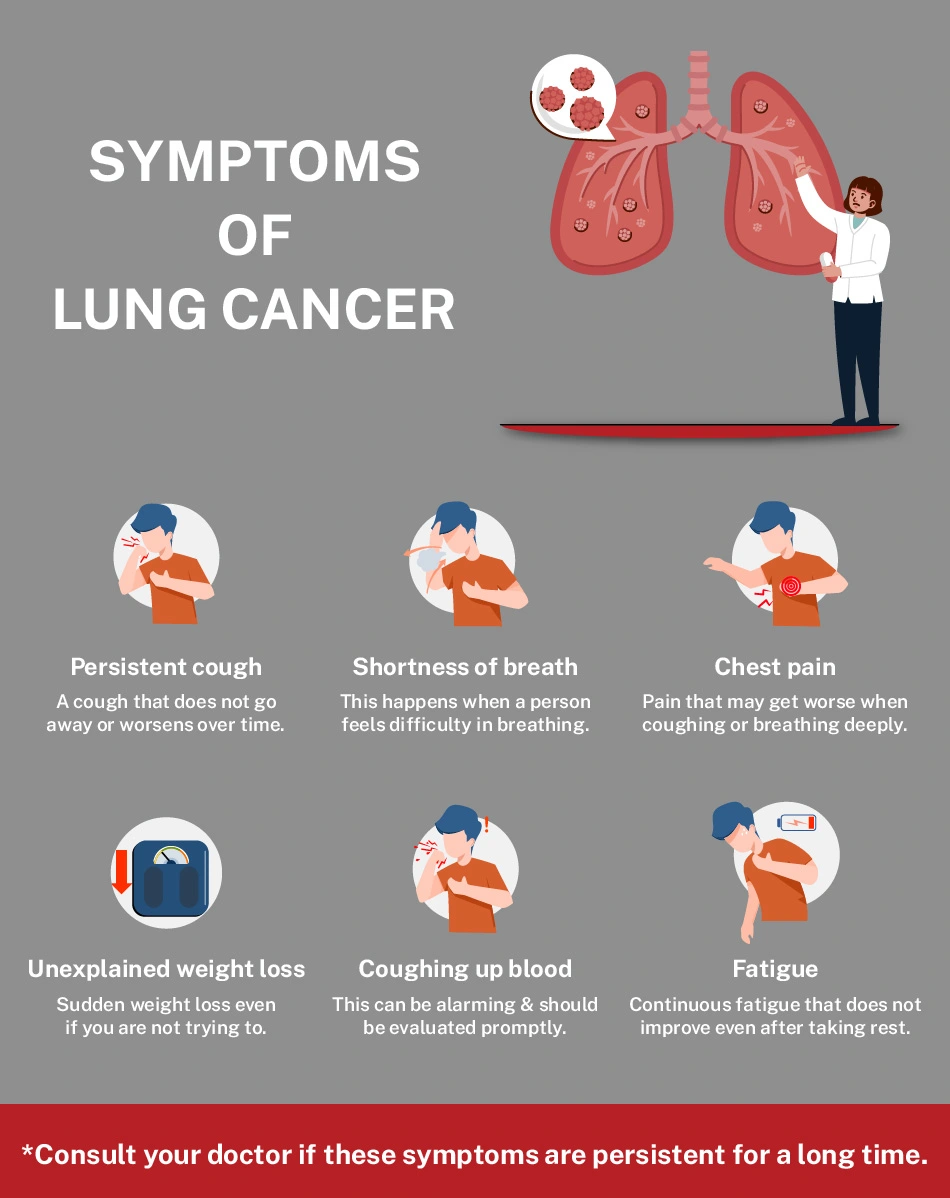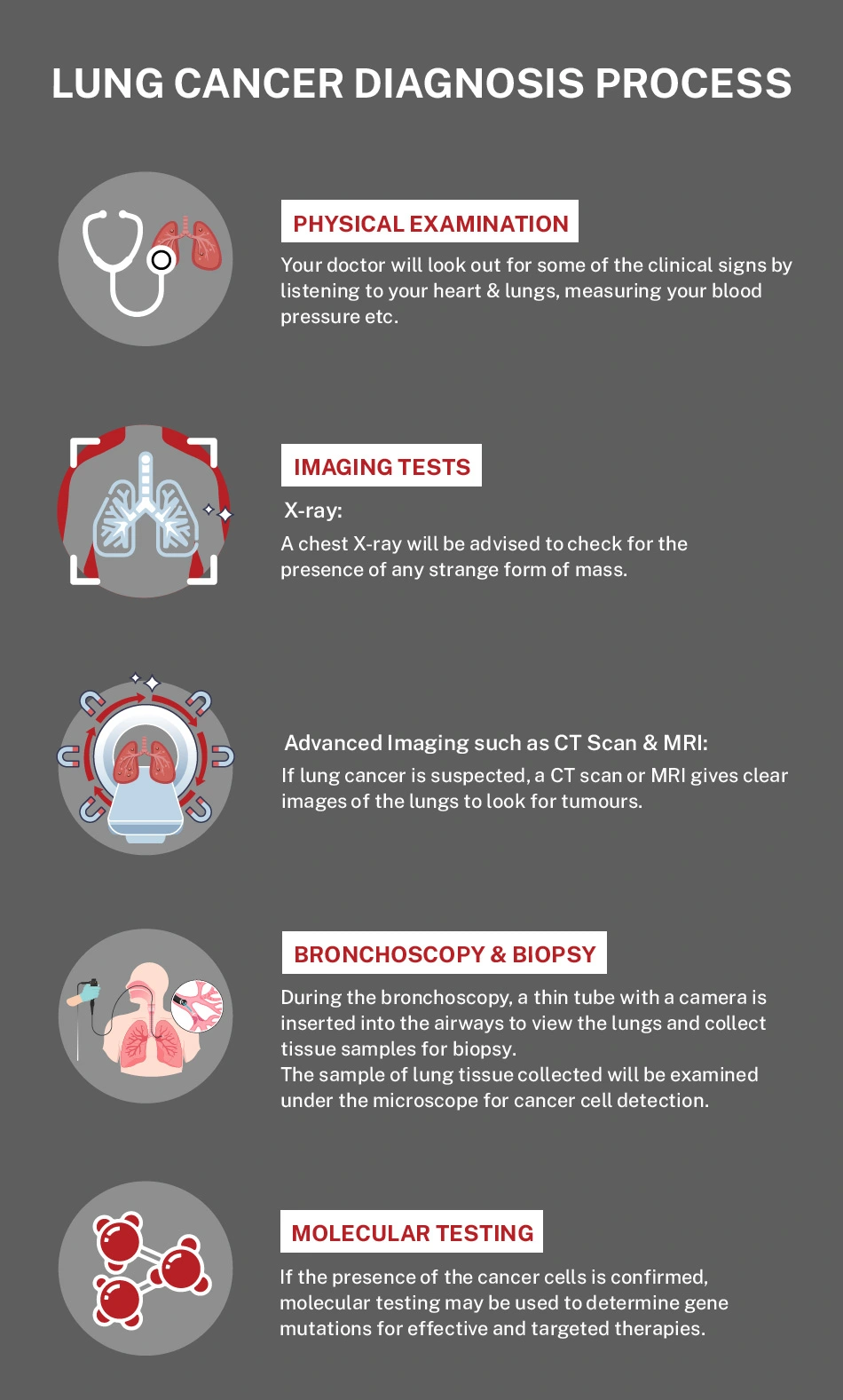
Lung cancer is a disease that occurs when there is an uncontrollable growth of abnormal cells in the lungs, causing damage to the healthy lung cells. These abnormal cells turn into malignant tumours and start to interfere with normal lung function.
Lung cancer was accountable for 18% of all cancer-related deaths globally in 2020. Thus, there is a need to know about lung cancer, its risk factors, common signs of lung cancer, the existing treatments and how one can prevent it. If you're experiencing any such problem, don't ignore it. Contact our best Oncologist at CMRI Hospital, Kolkata today for expert consultation and treatment.In this blog, we will focus on some important aspects. So, let’s start and let’s see more about this.
Lung cancer is a disease that occurs when there is an uncontrollable growth of abnormal cells in the lungs, causing damage to the healthy lung cells. These abnormal cells turn into malignant tumours and start to interfere with normal lung function. Cancerous cells in the lungs tend to spread to other parts of the body, including the brain and bones. Early detection is the key that improves the success and survival rate.
There are two main types of lung cancer:
Early recognition of lung cancer symptoms can prove to be helpful in its effective treatment.

Consult your doctor if these symptoms are persistent for a long time.
There are several factors that can cause lung cancer; however, some of the common and significant ones are:
While smoking remains the lead cause of lung cancer, other risk factors may include:
|
Risk factor |
How does it impact? |
|
Age |
Most lung cancer cases usually occur in individuals over 65 years but this may not be the case every time. |
|
Gender |
Men are more likely to develop lung cancer than women, although this gap is narrowing. |
|
Pre-existing lung conditions |
Conditions like COPD (chronic obstructive pulmonary disease) can increase risk. |
|
Occupational exposures |
Jobs that expose individuals to harmful chemicals or materials can increase the risk. |
The diagnosis process of lung cancer involves multiple stages.

Early detection and a proactive approach can lead to successful outcomes. Feel free to reach out for expert advice at CMRI. Our team will provide you end-to-end guidance for your concerns and queries.
Lung cancer is classified into four stages based on its progression:
While not all cases of lung cancer can be prevented, several strategies can reduce risk, including:
Written and Verified by:
-Dr.-Indranil-Khan-(-Oncology-).webp&w=256&q=75)
Dr. Indranil Khan is a Consultant in Clinical Oncology Dept. at CMRI, Kolkata, with over 8 years of experience. He specializes in chemotherapy, radiotherapy, immunotherapy and advanced cancer treatment modalities with a focus on precision, palliative care, and patient-centred treatment
© 2024 CMRI Kolkata. All Rights Reserved.